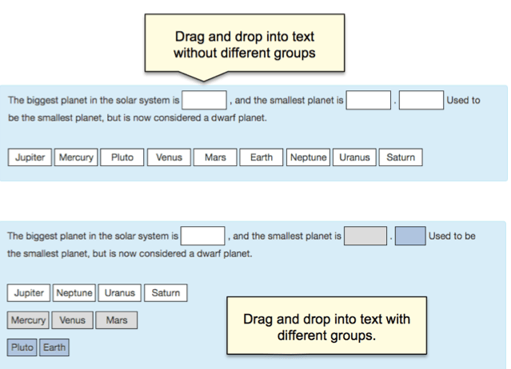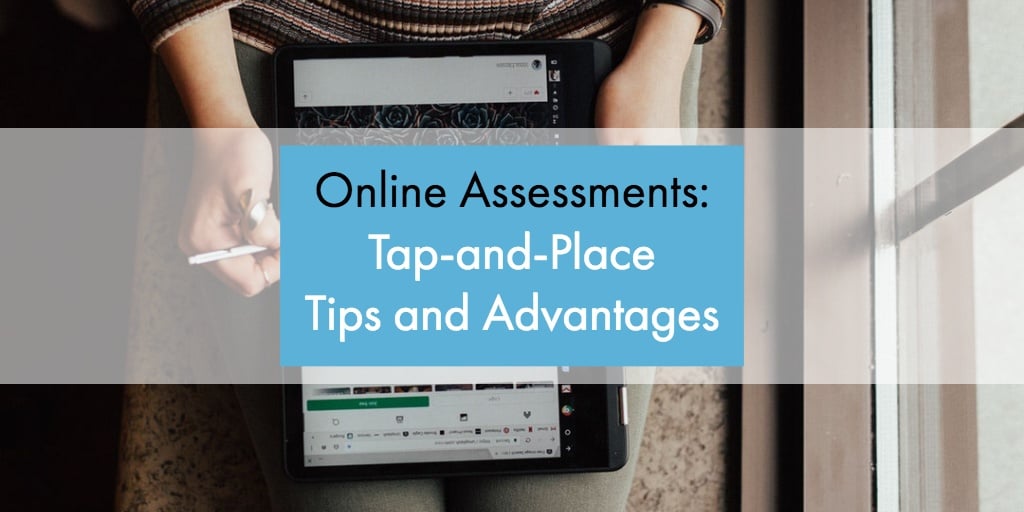Tap-and-place or drag-and-drop questions make your learning more interactive. Try it on your next elearning course and see the difference. This format is quite effective in making your learners stop and think about the content at hand. You can use it in several ways – match items, sequence steps, and so on.
Here is an example of how a tap-and-place or drag-and-drop question looks like.

Source
Oops! Not really.
On a serious note, here is how you can design a tap-and-place question.

Now, let’s look at some ways you can integrate tap-and-place questions in your elearning.
- Drag-and-drop interactions enhance the immersive quotient of a scenario. For example, say you want your sales folks to understand the steps of a certain process. Instead of asking them direct questions on which step comes after which one, consider introducing a drag-and-drop interactivity in the scenario. Provide them with situations for each step and ask them to drag the appropriate step to the situation.
- Let’s take another example. Say you want your customer executive to understand the stages involved in completing a return process. Consider creating a timeline interaction where they have to match the steps to the timeline by dragging them to the relevant box.
- Compliance training is usually quite boring. You can add life to it with tap-and-place interactions. For example, ask your learners to identify hazardous materials and place them into relevant containers. Deduct points if they get the wrong container. Isn’t it miles better than asking them directly, which material should they put in which container?
- If you can combine tap-and-place interactions with elearning characters, then you have a winning solution. One example, place some objects on one side of the screen, ask your learners to read the backstory, and then request them to match the correct object relevant to each character.
All these examples encourage the learners to not only know their subject but apply the knowledge. When learners are given opportunities to learn through application, they learn faster and retain longer.
Design Tips on Creating Tap-And-Place Questions
#1: Map Out Your Motives.
Plan it out beforehand. Determine what your motives are behind including tap-and-place interactions. Which objects should you include? What kind of decisions do you want the learners to take? Where will you place the objects on the screen? Where do you want them moved? Deciding on these parameters in advance will save you time and effort.
#2: Provide Clear Instructions and Feedback.
You can design several kinds of drag-and-drop interactions to jazz up your learning. But, if your learners fail to understand what they are supposed to do, then the point is lost. So, make sure you provide clear instructions on what you want them to do. You wouldn’t want them to waste time trying to figure out what is expected from them. Also, provide them immediate feedback. They should know where they are going wrong. That way, wrong learning behavior is not committed to their long-term memory.
#3: Make Sure You Don’t Make it to Easy or Difficult.
It is difficult to walk the middle ground. But, if you make the questions to easy, your learners do not benefit from the activity. If you make it too difficult, then you may lose the learners midway. You have to get it just right. Also, take precautions that your learners cannot simply guess the right answer without applying their brains. You may want to add a few distractors that encourage the learners to understand the concept before taking the test. Have similar looking options so that they cannot make a wild guess. That way, they will have to understand the content to answer correctly.
There are several ways to use tap-and-place questions in elearning. You just need to put in some thought into which activity works best for you and your target audience.
Using a high-quality authoring tool like Gutenberg Technology’s end-to-end publishing platform gives content creators the flexibility to seamlessly create content on the web, smartphones, tablets, and more. The simple to use authoring tool is one of the best ways to create custom content to offer students of all ages the best possible learning experience.






Leave a comment